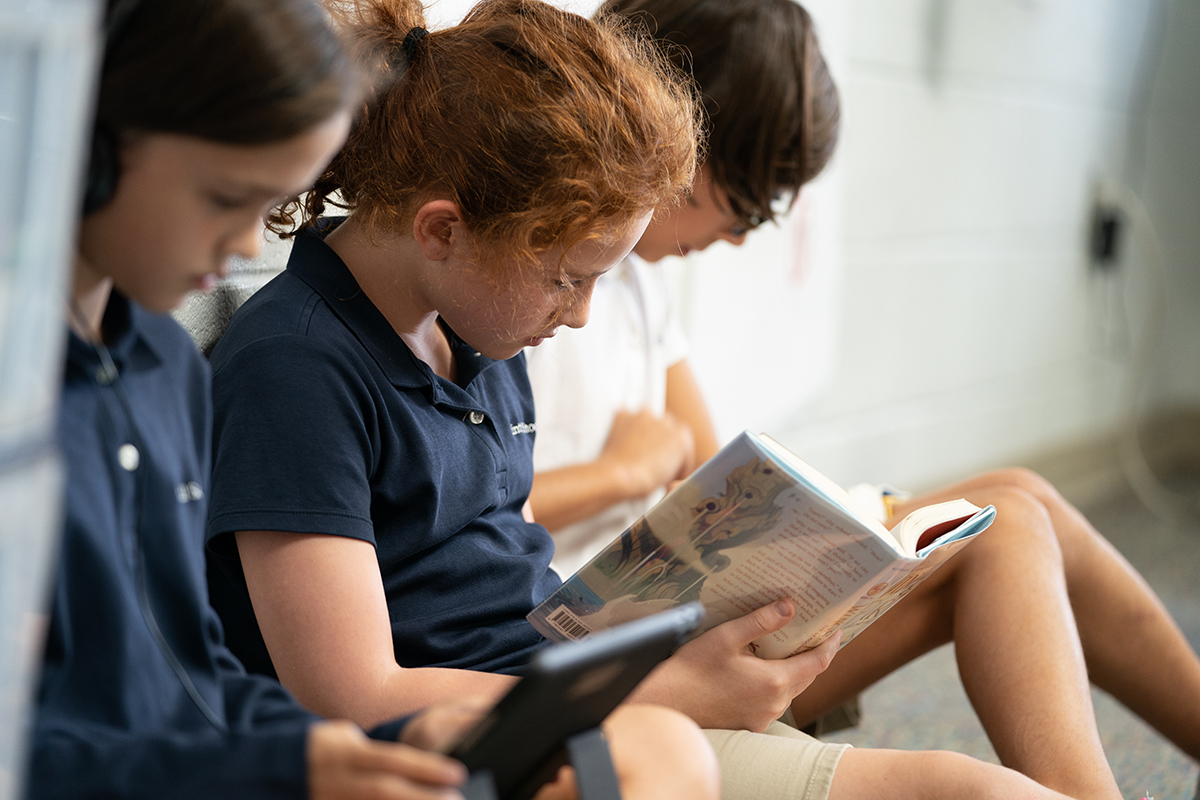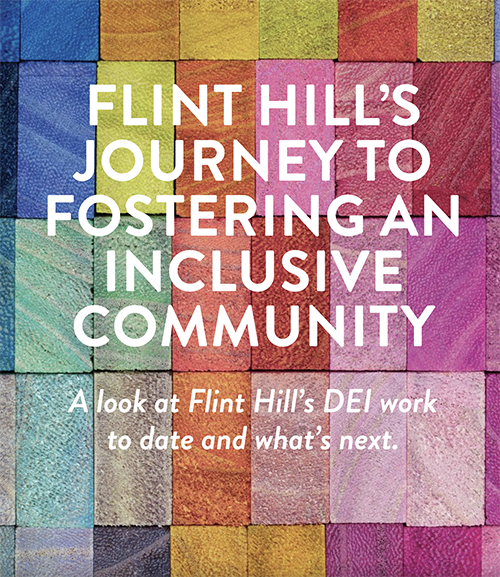HUSKY HIGHLIGHTS
LEARN MORE ABOUT FLINT HILL

November 1, 2023
Written by Flint Hill Admission Team
Creating an Inclusive Home Library for Your Young Reader
When you buy books for your child, are you balancing fiction and nonfiction? Are there contemporary themes and classic themes? Are the protagonists representative of more than one gender?
Christine Dwyer, Grades JK-6 Language Arts Department Chair at Flint Hill, discusses these questions and more as we explore how you can create an inclusive library for your young readers at home.
Watch the video or scroll down for the transcript.
TRANSCRIPT: I am your host, Christine Dwyer, Language Arts Department Chair JK-6. This week’s topic is “Creating an Inclusive Home Library.”
At Flint Hill, our core values include respecting all equally. We believe a culturally inclusive classroom is one where students and teachers alike recognize, appreciate and capitalize on diversity so as to enrich the overall learning experience. Fostering a culturally inclusive learning environment encourages all individuals to develop effective intercultural skills.
We are intentional about selecting books and texts for our school and classroom libraries. We choose books that are reflective of experiences from various perspectives, images that counter stereotypes and stories that normalize and value differences at developmentally appropriate levels.
When you are building your home library for your child, here are a few questions to consider:
- Are you balancing fiction and nonfiction books?
- Is there a balance between contemporary themes and classic themes?
- Are the protagonists representative of more than one gender?
- Are you selecting books with ethnically diverse protagonists?
- Are you selecting books that offer different perspectives and ways of living?
- Is there a diversity of authors reflected in your library?
Let me share a few of my favorites with you:
- Say Something by Peter H. Reynolds identifies and illustrates the many ways that children can notice their worlds and use their voices to have an impact and make positive change.
- Red - A Crayon’s Story by Michael Hall is about a crayon who knows it is blue but is labeled as red. He goes through life initially thinking he is no good at anything, but really, he is just no good at being red; he is really good at being blue!
- When Stars are Scattered by Victoria Jameson and Omar Mohamed is a graphic novel set in Dadaab Refugee Camp in Kenya. Omar is a refugee from Somalia who is responsible for his non-verbal brother, Hasaan, and who is given the opportunity to go to school. The illustrations and rich characters help give insight into day-to-day living in Dadaab.
- Finding Langston by Lisa Cline Ransom is a historical fiction text set about a boy, Langston, who moves from Alabama to Chicago during the Second Great Migration. And I’m not gonna lie, I like that it’s a thin, digestible text.
- A Good Kind of Trouble by Lisa Moore Ramee is about a 12-year-old girl who always wants to do the right thing and follow the rules. This personal code gets challenged when she experiences some hard things that need her voice.
Thanks so much for your interest in curating inclusive books to enrich your home library!
LEARN MORE ABOUT FLINT HILL
Fill out the form to receive updates from our team.
For Flint Hill, diversity, equity and inclusion work began in the late 1990s, ramped up in 2013 and continues today.
A Flint Hill teacher explores how you can create an inclusive library for your young readers at home, along with some book recommendations.



